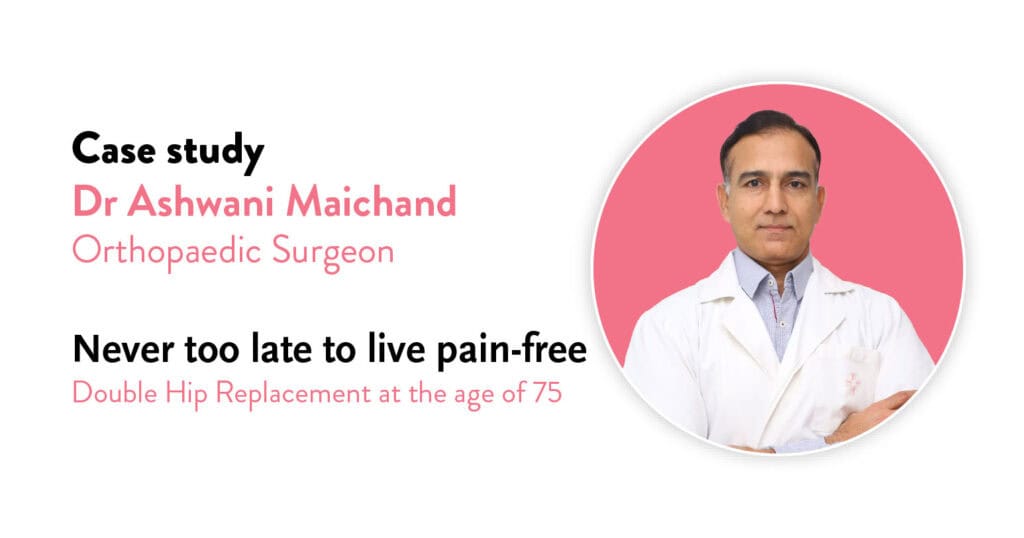A 75-year-old male patient came to the Orthopaedic Department at the CK Birla Hospital, Punjabi Bagh with an ongoing ailment of Ankylosing Spondylitis. He showed up with all the complications of Ankylosing Spondylitis which had enhanced due to age.
The significant physical symptoms that are visible in patients with this condition are:
The optimum solution for this, based on physical examination, was surgery. But given the age of the patient, before deciding on surgery a thorough screening process was required to make sure the patient would be able to sustain the treatment.

The patient got a full screening done to help the surgical team understand the potential risks involved with respect to the patient’s current comorbidities and age. The patient got imaging and blood tests to arrive at a comprehensive view of the patient’s existing overall health conditions. Upon careful evaluation, the team decided to proceed with Total Hip Replacement (THR) Surgery.
Since the surgical team was planning a Total Hip Replacement (THR) Surgery, for both hips, the potential surgical complications need to be addressed. In this case, it was essential to weigh the pros and cons of the surgical techniques: open technique or MIS technique. But there are several complications to using the Open Technique for Total Hip Replacement Surgery.
But this was not the ideal approach, given the patient’s age. To provide prompt treatment and manage the condition better, Dr Ashwani Maichand and his team opted for the Minimally Invasive Surgical method for Total Hip Replacement Surgery. The surgery was successfully performed and the patient did not have to experience unnecessary complications.
Using the MIS technique, the surgical outcomes for the patient were well noticed. Compared to the more laborious technique, this gave the patient no complications that would lead to blood transfusion. Therefore no ICU stay was required either. Post-surgery the patient was able to get back on his feet and walk within the next 24 hours. With effective rehab exercises, the patient was able to climb stairs in the next 48 hours. With the right technique, we were able to preserve the functionality of the patient’s legs which was imperative to maintain a good quality of life.